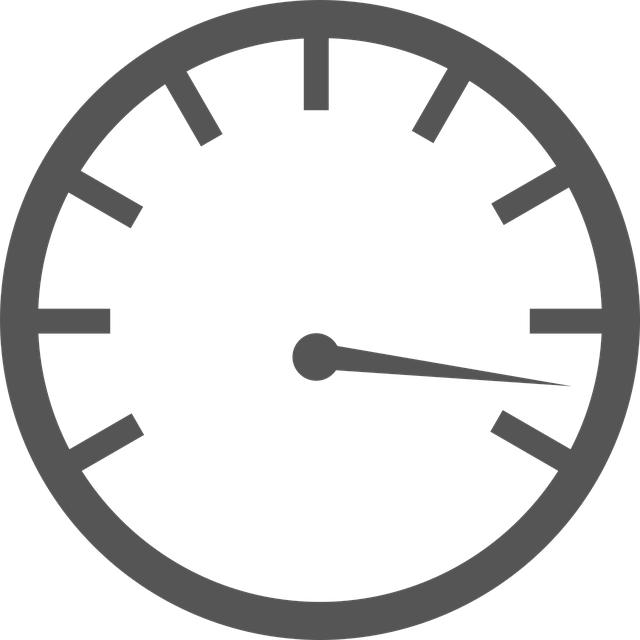Hey there fellow riders! Are you ready to dive into the nitty-gritty world of motorcycle chain maintenance? There’s no denying that your trusty two-wheeled companion needs some TLC from time to time, and one crucial aspect of keeping it roadworthy is counting those oh-so-important chain links. But fear not, because today we’re going to become chain check experts together! In this ultimate maintenance guide, we’ll walk you through the dos and don’ts of determining the correct number of links, making sure you’re always on top of your chain game. So grab your tools and saddle up, because it’s time to unlock the secrets of counting motorcycle chain links like a pro!
1. Understanding the Role of Motorcycle Chain Links in Ensuring Smooth Performance
The motorcycle chain is an essential component that plays a crucial role in ensuring the smooth performance of your bike. Understanding the role of motorcycle chain links is essential for any rider looking to maintain their machine in top-notch condition.
Chain links are the individual units that make up the chain, and they play a vital part in transferring the power from the engine to the rear wheel. Each link connects to the next one, creating a continuous loop that allows the wheel to rotate when the engine is engaged.
The number of chain links in a motorcycle chain is important because it determines the length and fitment of the chain. Counting the links accurately is crucial when replacing a worn-out chain or upgrading to a different chain size. To count the links, follow these simple steps:
- Ensure the bike is in a stable position, preferably on a center stand or lift.
- Locate a visible reference point on the chain, such as a colored link or a master link.
- Start counting the links from the reference point, making sure to count both inner and outer links.
- Continue counting until you reach the other side of the chain, ensuring accuracy by double-checking your count.
By understanding the role of motorcycle chain links and knowing how to count them, you’ll be better equipped to maintain and upgrade your bike’s chain, ensuring a smooth and reliable performance on every ride. Remember, taking care of your chain is a crucial part of ensuring your motorcycle’s longevity and overall riding experience. So, don’t overlook the importance of this small yet critical component!

3. Signs of Chain Wear and When to Consider Replacing Links
When it comes to motorcycle chain maintenance, knowing how to identify signs of wear and knowing when to replace the links is crucial for keeping your ride in top condition. Regularly inspecting your chain can help prevent unexpected breakages and extend the lifespan of your chain. Here are some key signs to look out for and when it’s time to consider replacing your chain links:
-
Chain Stretch: Over time, chains can stretch due to the wear and tear of regular use. To check for chain stretch, measure the distance between a set number of links. If the measurement exceeds the manufacturer’s recommended limit, it’s time to replace your chain.
-
Visible Wear and Damage: Look out for signs of visible wear, such as rust, discoloration, or damaged links. If you notice any of these signs, it’s a clear indication that your chain needs to be replaced. Additionally, pay attention to loose or missing links, as they can compromise the integrity of the chain.
- Excessive Noise or Vibration: If your chain starts making unusual noises or causing excessive vibration during your rides, it’s a sign that something is not right. This could indicate worn out chain links or misalignment, which may require immediate attention or replacement.
Remember, regular inspections and maintenance can help ensure the safety and reliability of your motorcycle chain. If you notice any of these signs or have doubts about the condition of your chain, it’s always better to err on the side of caution and consult a professional for further evaluation. Keeping your chain in top shape will not only enhance your riding experience but also contribute to the overall longevity of your motorcycle.
4. Importance of Regular Chain Maintenance and Lubrication for Longevity
Regular chain maintenance and lubrication are crucial for the longevity of your motorcycle’s chain. Neglecting proper maintenance can lead to premature wear and even chain failure, which can be dangerous and costly to fix. By following these simple steps and incorporating them into your routine maintenance schedule, you can ensure that your chain stays in excellent condition for years to come.
-
Clean your chain regularly: Use a chain cleaner or degreaser to remove dirt, grime, and old lubricant from the chain. This will prevent debris from building up and causing excessive wear.
-
Inspect for damage: After cleaning, carefully inspect the chain for any signs of wear, such as rust, kinks, or loose links. Address any issues immediately to prevent further damage.
-
Count your chain links: Counting the links is a vital step for proper chain maintenance. It helps you determine if your chain has stretched, which can affect its performance and lifespan. To count the links, locate the master link (it usually has a different color or design) and start counting from there. A healthy chain typically has 120 links, but this can vary depending on your motorcycle’s make and model.
-
Measure chain tension: Proper chain tension is crucial for optimal performance and longevity. Use a chain tension gauge or your motorcycle’s owner manual to ensure that your chain is within the recommended tension range. Too loose or too tight can cause excessive wear and put extra stress on other components.
- Lubricate your chain: Once you’ve cleaned and inspected the chain, it’s time to apply fresh lubrication. Choose a high-quality motorcycle chain lube and apply it evenly along the entire length of the chain. Be sure to follow the manufacturer’s instructions for the best results.
Regular chain maintenance and lubrication will not only prolong the life of your motorcycle’s chain but also improve overall performance and reduce the risk of breakdowns. Make it a habit to perform these maintenance tasks regularly, and you’ll enjoy a smoother and safer ride. Remember, a little effort now can save you from costly repairs or even accidents in the future.
5. How to Measure Chain Length Correctly to Determine If It Requires Adjustment
To ensure optimal performance and safety, it’s crucial to regularly check and adjust the length of your motorcycle chain. The correct chain length not only improves the efficiency of power transfer but also reduces the risk of chain failure while riding. In this post, we’ll guide you on how to accurately measure your chain length, allowing you to determine if an adjustment is necessary.
-
Gather the Tools:
Before diving into the measurement process, make sure you have the following tools handy:- Tape measure or ruler
- Chain breaker tool or master link (if needed)
- Pliers or a pair of vice grips
- Whiteout or permanent marker (optional)
-
Verify the Chain Slack:
First, check the manufacturer’s recommended chain slack for your motorcycle model. Chain slack refers to the amount of vertical movement allowed when applying pressure to the chain mid-section. To measure this, lift your motorcycle off the ground, ensuring the chain is fully extended. Apply moderate pressure to the chain, and measure the distance between the swingarm pivot point and the center of the chain. This measurement should fall within the manufacturer’s recommended range. -
Count the Links:
Using your tape measure or ruler, count the number of links in your chain. Start from one end of the chain and include both inner and outer plates in your count. Remember to count half-links as well, if present. Note down the total number of links; this will serve as your reference point for future adjustments. -
Assess Chain Wear:
While counting the links, it’s the perfect opportunity to inspect the condition of your chain. Look for signs of wear, such as rust, stiff links, or excessive stretching. If you notice any of these issues, it may be time to replace your chain and sprockets. - Calculate the Ideal Length:
Now that you have the link count, determine if your chain needs adjustment. Divide the total number of links by two to find the ideal length for your motorcycle chain. For example, if you counted 100 links, your chain should be adjusted to 50 links on each side of the rear sprocket. Be sure to consult your motorcycle’s user manual for specific adjustment instructions if needed.
Remember, a well-maintained chain is essential for a smooth and safe ride. Regularly inspecting, cleaning, lubricating, and adjusting your chain will prolong its life and ensure optimal bike performance. By following these steps, you can confidently measure your motorcycle chain length, knowing whether it requires adjustment or replacement.
6. The Role of Chain Tension in Motorcycle Performance and Safety
Chain tension plays a crucial role in ensuring optimal motorcycle performance and safety. Maintaining the right amount of tension in your motorcycle’s chain is vital for smooth power delivery, enhanced handling, and preventing chain slippage or breakage. In this maintenance guide, we will focus on one crucial aspect of chain care – counting motorcycle chain links.
Counting the number of links in your motorcycle’s chain is a fundamental skill that every rider should possess. It allows you to determine if your chain has stretched beyond the recommended limit and needs adjustment or replacement. To count the links, you will need a ruler or a chain measuring tool.
Follow these steps to count your motorcycle chain links for accurate chain tension assessment:
- Position your motorcycle on a secure stand or have someone hold it steady.
- Locate the master link, which usually has a different color or a clip that stands out.
- Using a marker or a piece of tape, mark the first link after the master link.
- Begin counting the links, starting from the marked link and moving away from the master link.
- Maintain accuracy by counting both the inner and outer plates as separate links.
- Continue counting until you reach the last link. Take note of the total number of links counted.
Once you have counted the links, compare the total to the manufacturer’s specifications for your motorcycle model. If the count exceeds the recommended number, your chain has likely stretched and needs adjustment or replacement. Consult your motorcycle’s user manual or a professional mechanic for guidance on the appropriate action to take.
Remember, correct chain tension is essential for optimum motorcycle performance and safety. Regularly checking and maintaining your chain tension will not only extend the lifespan of your chain but also enhance your riding experience. So, grab your ruler, follow the steps above, and ensure your motorcycle’s chain is in its prime condition!
7. Tips for Keeping Your Motorcycle Chain Clean and Free from Debris
Maintaining a clean and debris-free motorcycle chain is crucial for a smooth and safe ride. Neglecting this essential part of your bike’s maintenance can lead to decreased performance and even costly repairs. To help you keep your motorcycle chain in top condition, here are some useful tips:
-
Regular Cleaning: Start by ensuring your motorcycle is on a center stand or securely balanced. Clean the chain using a chain cleaner or a mild degreaser and a brush. Gently scrub the chain, removing any dirt, grime, and debris that may have accumulated. Rinse the chain thoroughly with water and dry it completely before applying lubricant.
-
Lubrication: Proper lubrication is key to reducing friction and extending the life of your chain. Ensure you use a high-quality motorcycle chain lubricant that is specifically designed for your bike. Apply the lubricant evenly to the chain, avoiding excessive dripping or pooling. Allow some time for the lubricant to penetrate before wiping off any excess.
- Chain Tension: Maintaining the correct chain tension is crucial for optimal performance. Check your motorcycle’s owner’s manual for the recommended tension specifications. Use a chain tensioning tool or measure the slack with your fingers. Ensure the chain has just enough flexibility, neither too tight nor too loose, for smooth operation.
Remember, a clean and well-maintained motorcycle chain not only enhances your riding experience but also contributes to the overall longevity of your bike. By following these tips, you’ll be able to enjoy a smoother and safer ride while extending the life of your motorcycle chain.
8. Common Mistakes to Avoid When Counting Motorcycle Chain Links
Counting motorcycle chain links is an essential part of regular maintenance. However, there are some common mistakes that many riders make when attempting to count the links. By avoiding these mistakes, you can ensure accurate counts and maintain the optimal performance of your motorcycle chain.
-
Incorrect starting point: One of the most common mistakes is starting the count from the wrong point. When counting links, always begin from the master link or the connecting link, which is usually marked with a different color or has a distinct shape.
-
Skipping links: Another mistake is accidentally skipping links while counting. To avoid this, it’s helpful to use a small tool, like a paperclip, to hold the chain steady and prevent it from moving while you count. Take your time and double-check to ensure you haven’t missed any links along the way.
- Not accounting for "half-links": Some chains may have "half-links" that can be used for precise adjustments. These half-links need to be counted as well, as they contribute to the overall length of the chain. Make sure to count them separately and add them to your final tally.
Properly counting motorcycle chain links is crucial for maintaining tension, avoiding premature wear, and ensuring a smooth ride. By following these tips and avoiding common mistakes, you can confidently keep your chain in optimal condition and enjoy safe and reliable rides.
9. Choosing the Right Chain for Your Motorcycle: Understanding Different Types and Sizes
One of the most critical aspects of motorcycle maintenance is ensuring that you have the right chain. Understanding the different types and sizes of chains available can make a world of difference in enhancing the performance and longevity of your motorcycle. So, before you hit the road, take a moment to dive into the world of motorcycle chains and find the perfect match for your ride.
Firstly, let’s explore the different types of chains. The most common types include standard chains, O-ring chains, and X-ring chains. Standard chains are basic and affordable, but they require frequent maintenance and lubrication. On the other hand, O-ring and X-ring chains are designed to minimize friction and prolong chain life. They have rubber or synthetic O-rings or X-rings that keep the lubrication in and dirt out, resulting in less maintenance and longer chain life.
Now, let’s delve into the chain sizes. Motorcycle chains are typically categorized by pitch and width. The pitch refers to the distance between the corresponding pins in the chain, while the width refers to the size of the sprocket that the chain fits into. Common pitch sizes include 520, 525, and 530, with 520 being the narrowest and 530 the widest. When it comes to width, you’ll commonly find chains available in 1/4-inch, 5/16-inch, and 3/8-inch sizes. To ensure you choose the right chain for your motorcycle, consult your owner’s manual or consult with a knowledgeable technician.
In conclusion, choosing the right chain for your motorcycle is crucial for optimal performance and safety. By understanding the different types and sizes available, you can make a confident decision that will keep your motorcycle running smoothly. Whether you opt for a standard chain or invest in an O-ring or X-ring chain, always prioritize regular maintenance and lubrication to extend the chain’s life and keep your ride in top shape.
10. Expert Recommendations for Maximizing the Lifespan of Your Motorcycle Chain
<p>Maintaining your motorcycle chain is essential for optimal performance and safety. To help you maximize the lifespan of your chain and avoid costly repairs, we have gathered expert recommendations:</p>
<h3>1. Regular Cleaning</h3>
<p>Keeping your motorcycle chain clean will prevent dirt and debris from causing premature wear. Use a chain cleaner or solvent to remove any grime, and a brush to scrub away stubborn deposits. Rinse with water before thoroughly drying the chain to avoid rust.</p>
<h3>2. Lubrication</h3>
<p>Proper lubrication is crucial for reducing friction and preserving the chain's lifespan. Use a <a href="https://pikespeakmotorsports.org/2022/01/18/dual-sport-delight-unveiling-the-wonders-of-what-is-a-dual-sport-motorcycle/" title="Dual Sport Delight: Unveiling the Wonders of What Is a Dual Sport Motorcycle!">high-quality chain lubricant</a> and apply it evenly along the length of the chain. Allow the lubricant to penetrate for a few minutes before wiping off any excess.</p>
<h3>3. Tension Adjustment</h3>
<p>Regularly checking and adjusting the tension of your motorcycle chain is important for both performance and safety. An overly loose chain can lead to sprocket damage, while an overly tight chain can cause excessive stress and wear. Refer to your motorcycle's manual for the recommended tension specifications and use a chain tensioner tool to make adjustments as needed.</p>
<h3>4. Inspections</h3>
<p>Periodically inspecting your motorcycle chain is crucial to catch any issues before they become severe. Look out for signs of excessive wear, such as stretched links or visible damage. Additionally, check for any loose or missing O-rings and replace them promptly to maintain proper sealing and prevent premature degradation.</p>
<h3>5. Avoiding Excessive Forces</h3>
<p>Avoid subjecting your motorcycle chain to excessive forces, such as sudden acceleration, aggressive braking, or wheelies. These actions put unnecessary stress on the chain, leading to increased wear and the potential for chain failure.</p>
<p>By following these expert recommendations, you'll not only maximize the lifespan of your motorcycle chain but also ensure a smoother and safer riding experience. Remember, a well-maintained chain contributes to the overall longevity and performance of your beloved bike!</p>In conclusion, mastering the art of counting motorcycle chain links is an essential skill every rider should possess. With this maintenance guide, we’ve demystified the process and equipped you with the knowledge to keep your chain in tip-top shape. Remember, a well-maintained chain is not only crucial for your bike’s performance but also ensures your safety on the road. So, whether you’re a seasoned rider or just starting out, don’t overlook this vital aspect of motorcycle upkeep. Embrace the knowledge, put it into practice, and hit the road with confidence knowing your chain is ready to take you on countless adventures. Stay safe and ride on!



